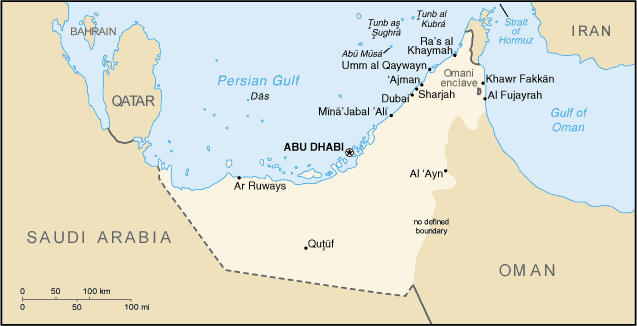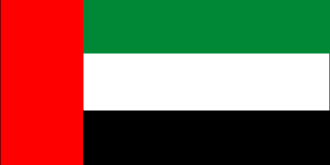
|
United Arab Emirates
Background:
The Trucial States of the Persian Gulf coast granted the UK control
of their defense and foreign affairs in 19th century treaties. In 1971, six of
these states - Abu Zaby, 'Ajman, Al Fujayrah, Ash Shariqah, Dubayy, and Umm al
Qaywayn - merged to form the UAE. Ra's Al Khaymah joined them in 1972. The
UAE's per capita GDP is not far below those of the leading West European
nations.
|

Climate and Terrain:
Desert; cooler in eastern mountains.
Flat, barren coastal plain merging into rolling sand dunes of vast
desert wasteland; mountains in east.
Elevation extremes: lowest point: Persian Gulf 0 m, highest point: Jabal
Yibir 1,527 m.
Land use: Arable land: 0%, forests and woodland: 0%.
|
|
|
Economy overview:
The UAE has an open economy with a high per capita income
and a sizable annual trade surplus. Its wealth is based on oil and gas output
(about 33% of GDP), and the fortunes of the economy fluctuate with the prices
of those commodities. Since 1973, the UAE has undergone a profound
transformation from an impoverished region of small desert principalities to a
modern state with a high standard of living. At present levels of production,
oil and gas reserves should last for more than 100 years.
|
|